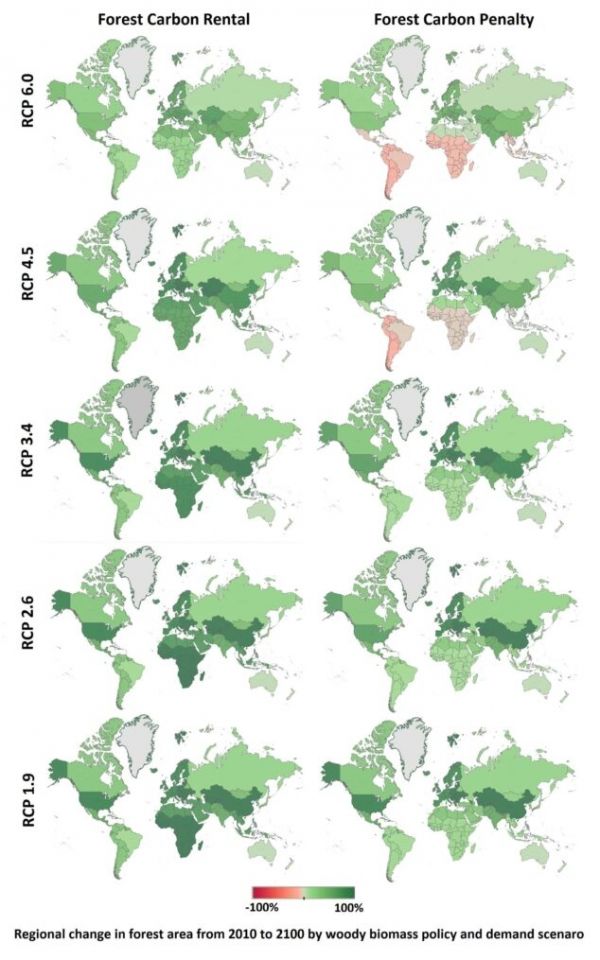In their study, the research team — Alice Favero, associate director of Graduate Studies at Georgia Institute of Technology’s School of Public Policy; Adam Daigneault, University of Maine E.L. Giddings Assistant Professor of Forest, Conservation and Recreation Policy; and Brent Sohngen, professor of environmental economics at Ohio State University — addressed the impacts of woody biomass demand on forest harvests, prices and related timber management issues. Their findings on the consequences of bioenergy policies on forests and carbon emissions are published in the journal “Science Advances.”
Using the global timber model (GTM) to assess how bioenergy demand affects the forestry sector, forestland and carbon sequestration, the researchers compared timber harvesting and management in more than 200 managed and natural forest ecosystems across 16 world regions under different bioenergy demand scenarios, including a no-bioenergy demand scenario, to isolate the role of management on forest carbon stocks.
While policy approaches vary on the regional level, their modeling analysis of the forest carbon rental payment approach indicates that forest area will increase substantially across the globe, with medium price scenarios leading to 500 million to 700 million new hectares of forests. While about 10% of this new forest is intensively managed nonindigenous plantation types, most of the gain in forests occurs in types that are managed less intensively through traditional silvicultural methods.
Continue reading at University of Maine
Image via University of Maine


